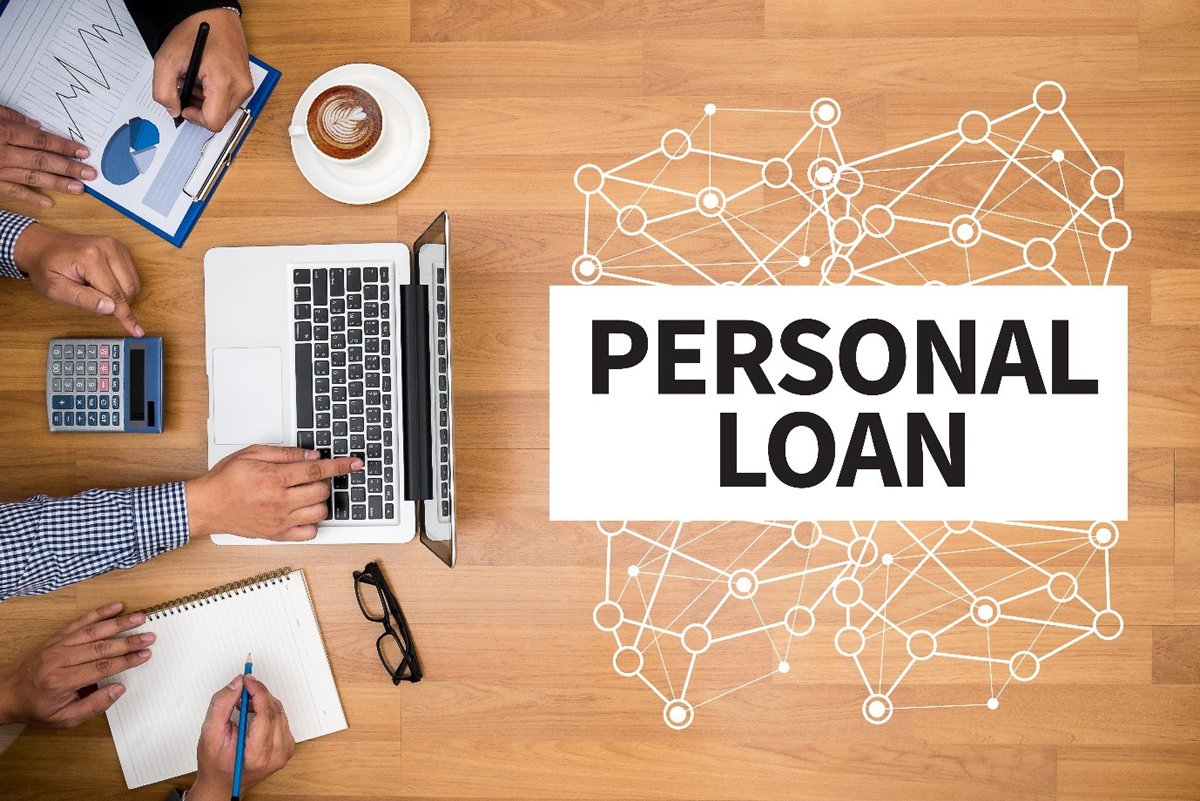Personal loans are one of the most versatile financial products available today, allowing individuals to borrow money for various purposes, such as debt consolidation, home improvement, medical expenses, or even for starting a business. In Ohio, just like in other states, personal loans can be an excellent solution for those in need of quick cash with manageable terms. However, before applying for a personal loan, it’s important to understand how they work, the types of personal loans available, and the specific regulations in Ohio that may affect you.
In this blog, we will explore everything you need to know about personal loans in Ohio, including eligibility criteria, interest rates, how to apply, and answers to frequently asked questions.
What is a Personal Loan?
A personal loan is an unsecured loan, meaning it does not require any collateral (such as a car or home) to back the loan. Lenders offer personal loans based on the borrower’s creditworthiness, income, and financial history. Typically, personal loans are used for non-business purposes such as paying off credit card debt, consolidating multiple debts, financing large purchases, or even covering unexpected expenses like medical bills or home repairs.
Personal loans are generally offered in two forms:
- Secured Personal Loans: A secured personal loan is backed by collateral (such as a home or a car), which reduces the risk to the lender. If the borrower fails to repay the loan, the lender can seize the collateral to recover the money.
- Unsecured Personal Loans: These are the most common type of personal loan. They do not require collateral but are typically offered to individuals with a good credit score and financial stability. Since there’s no collateral, the interest rates for unsecured personal loans tend to be higher than those for secured loans.
Why Consider a Personal Loan in Ohio?
Ohio residents consider personal loans for various reasons. Here are some common uses:
- Debt Consolidation: Combining multiple debts (such as credit card balances, medical bills, or payday loans) into a single loan with a lower interest rate can simplify your monthly payments and save you money on interest.
- Home Improvements: Personal loans can be used to finance home renovations, repairs, or upgrades. Since they’re unsecured, there’s no risk of losing your home if you’re unable to repay the loan.
- Medical Expenses: Unforeseen medical bills can be a significant financial burden. A personal loan can help cover the costs of medical treatments and other related expenses.
- Wedding Expenses: Planning a wedding can be expensive, and many couples take out personal loans to cover the costs of the big day.
- Emergency Expenses: Whether it’s a sudden car repair, funeral expenses, or an unexpected job loss, personal loans can help provide immediate financial relief.
- Credit Card Refinancing: For those with high-interest credit card debt, a personal loan can be used to pay off balances and save on interest.
Types of Personal Loans Available in Ohio
In Ohio, borrowers have access to a variety of personal loan options. Let’s take a look at the most common types:
1. Fixed-Rate Personal Loans
Fixed-rate personal loans are popular because they provide predictability. With a fixed-rate loan, your interest rate and monthly payments remain the same throughout the loan term. This makes it easier to budget and plan for repayment. Fixed-rate loans are generally ideal for borrowers who want stability and consistency in their loan repayments.
2. Variable-Rate Personal Loans
Variable-rate personal loans have an interest rate that changes over time based on market conditions. Your monthly payments may fluctuate depending on the changes in the interest rate. While these loans can sometimes offer a lower initial rate, they can become more expensive if interest rates rise. If you’re considering a variable-rate loan, make sure you understand how the rate can change and the maximum rate it can reach (often referred to as the “cap”).
3. Peer-to-Peer (P2P) Loans
Peer-to-peer loans are loans offered through online platforms that connect borrowers with individual investors. These loans often have competitive interest rates and can be a good option for borrowers who may not qualify for traditional loans. However, the application process can be more time-consuming, and not all P2P lenders are available in Ohio.
4. Payday Loans
Payday loans are short-term loans that are typically due on the borrower’s next payday. These loans are usually small amounts and come with high-interest rates. Payday loans are easy to obtain but can lead to a cycle of debt due to their high costs and short repayment periods. It is advisable to be cautious when considering payday loans.
5. Home Equity Loans and Lines of Credit (HELOC)
Homeowners in Ohio may also consider Home Equity Loans or Home Equity Lines of Credit (HELOC) as a form of personal loan. These are secured loans where your home is used as collateral. The interest rates are generally lower compared to unsecured loans, but there is a risk of foreclosure if you fail to repay the loan.
Personal Loan Eligibility Criteria in Ohio
While each lender has its own set of requirements, there are some common eligibility criteria for personal loans in Ohio:
1. Credit Score
Your credit score is one of the most important factors in determining your eligibility for a personal loan. Lenders typically require a credit score of 620 or higher for unsecured personal loans, but some may offer loans to borrowers with lower credit scores. If your score is above 700, you’ll likely qualify for the best interest rates.
2. Income
Lenders want to ensure that you have a steady income to repay the loan. They may require proof of income, such as pay stubs, tax returns, or bank statements.
3. Employment Status
Stable employment history is important when applying for a personal loan. Lenders generally prefer borrowers who have been employed for at least six months to a year with the same employer.
4. Debt-to-Income Ratio (DTI)
Your DTI ratio is the percentage of your income that goes toward paying existing debts. Lenders typically look for a DTI ratio below 40%, although some may approve loans with higher ratios.
5. Residency
Some lenders may have residency requirements. In Ohio, you must be a resident to apply for a personal loan with certain lenders, especially state-based banks or credit unions.
How to Apply for a Personal Loan in Ohio
The process of applying for a personal loan in Ohio is relatively straightforward. Here’s a step-by-step guide:
1. Check Your Credit Score
Before applying for a personal loan, check your credit score to understand where you stand. You can get a free credit report once a year from each of the three major credit bureaus (Equifax, Experian, and TransUnion).
2. Compare Lenders
Research different lenders to find the best loan options for your situation. Look for competitive interest rates, fees, and terms. You can apply with traditional banks, credit unions, or online lenders.
3. Gather Documentation
Prepare the necessary documents before applying. Common documents required include proof of identity, proof of income, proof of address, and your credit history.
4. Submit Your Application
Once you’ve selected a lender, you can submit your application online or in person. The lender will evaluate your application, conduct a credit check, and may ask for additional information.
5. Loan Approval and Disbursement
If your loan is approved, you’ll be informed of the loan terms (interest rate, loan amount, repayment schedule). Upon agreement, the loan funds will be disbursed to your account.
Personal Loan Interest Rates in Ohio
Interest rates on personal loans in Ohio can vary based on several factors, including your credit score, the loan term, and whether the loan is secured or unsecured. On average, personal loan interest rates in Ohio range from 6% to 36%. However, borrowers with higher credit scores may qualify for lower rates.
Factors Affecting Interest Rates:
- Credit Score: The better your credit score, the lower your interest rate.
- Loan Term: Shorter loan terms typically come with lower interest rates.
- Loan Type: Secured loans usually have lower interest rates compared to unsecured loans.
Advantages of Personal Loans in Ohio
- Flexibility: Personal loans can be used for virtually any purpose, giving you the freedom to choose how to use the funds.
- Fixed Repayment Schedule: Personal loans often come with fixed repayment schedules, making it easier to budget for your monthly payments.
- Consolidate Debt: You can use a personal loan to consolidate high-interest debt into one monthly payment.
- No Collateral: Unsecured personal loans do not require collateral, so you won’t risk losing valuable assets like your home or car.
Disadvantages of Personal Loans in Ohio
- High-Interest Rates for Bad Credit: If you have poor credit, you may face higher interest rates.
- Risk of Debt: Borrowing money without a clear plan to repay it could lead to financial hardship.
- Fees and Charges: Some lenders charge fees, including origination fees or prepayment penalties.
Frequently Asked Questions (FAQ)
1. Can I get a personal loan with bad credit in Ohio?
Yes, you can get a personal loan with bad credit, but you may face higher interest rates. Some lenders specialize in offering loans to borrowers with poor credit scores, but it’s essential to compare terms before applying.
2. How long does it take to get approved for a personal loan in Ohio?
Approval times vary by lender. Online lenders often provide faster approval, sometimes within 24 hours. Traditional banks and credit unions may take a few business days to process your application.
3. Can I use a personal loan to pay off credit card debt?
Yes, one of the most common uses of personal loans is to consolidate credit card debt. A personal loan with a lower interest rate can help reduce your overall debt burden.
4. What is the minimum credit score required for a personal loan in Ohio?
While the minimum credit score can vary by lender, most require a score of at least 620 for an unsecured personal loan. Borrowers with scores above 700 will generally receive better rates.
5. Are there any penalties for paying off a personal loan early?
Some lenders may charge prepayment penalties if you pay off your loan early. Be sure to check the terms of your loan before committing to ensure there are no penalties.
Conclusion
Personal loans in Ohio offer residents a flexible and accessible way to borrow money for a variety of needs. While not required by law, they can help you manage unexpected expenses, consolidate debt, or finance important life events. Before taking out a personal loan, carefully consider your financial situation, the loan terms, and the interest rate to ensure it’s the best option for you. By understanding the different types of loans available, eligibility criteria, and how to apply, you can make a well-informed decision that best suits your financial goals.
Read more:










